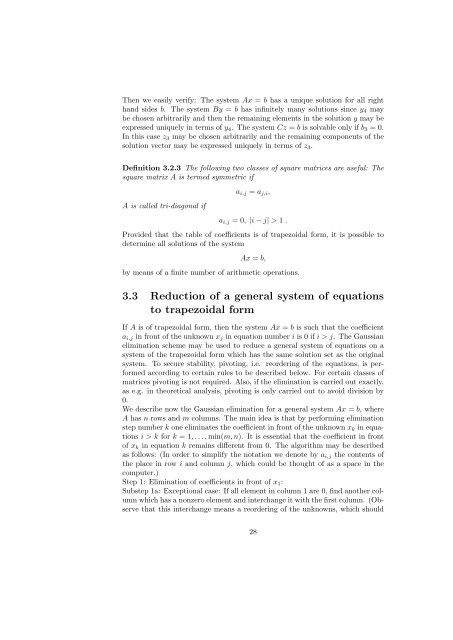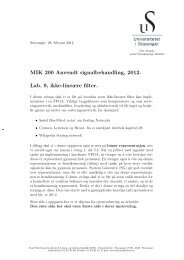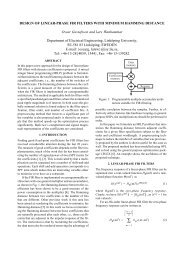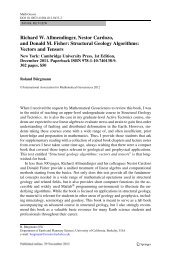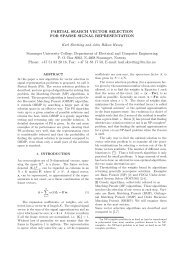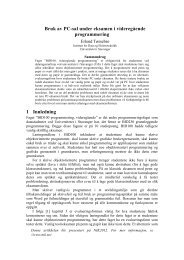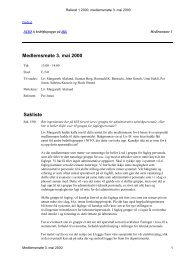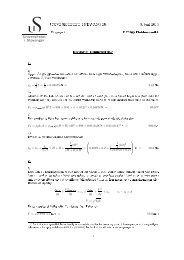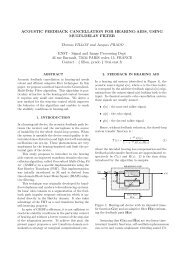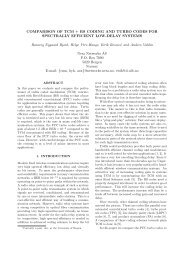Lecture Notes Course à MA 190 Numerical Mathematics, First ...
Lecture Notes Course à MA 190 Numerical Mathematics, First ...
Lecture Notes Course à MA 190 Numerical Mathematics, First ...
Create successful ePaper yourself
Turn your PDF publications into a flip-book with our unique Google optimized e-Paper software.
Then we easily verify: The system Ax = b has a unique solution for all righthand sides b. The system By = b has infinitely many solutions since y 4 maybe chosen arbitrarily and then the remaining elements in the solution y may beexpressed uniquely in terms of y 4 . The system Cz = b is solvable only if b 3 = 0.In this case z 3 may be chosen arbitrarily and the remaining components of thesolution vector may be expressed uniquely in terms of z 3 .Definition 3.2.3 The following two classes of square matrices are useful: Thesquare matrix A is termed symmetric ifA is called tri-diagonal ifa i,j = a j,i .a i,j = 0, |i − j| > 1 .Provided that the table of coefficients is of trapezoidal form, it is possible todetermine all solutions of the systemAx = b,by means of a finite number of arithmetic operations.3.3 Reduction of a general system of equationsto trapezoidal formIf A is of trapezoidal form, then the system Ax = b is such that the coefficienta i,j in front of the unknown x j in equation number i is 0 if i > j. The Gaussianelimination scheme may be used to reduce a general system of equations on asystem of the trapezoidal form which has the same solution set as the originalsystem. To secure stability, pivoting, i.e. reordering of the equations, is performedaccording to certain rules to be described below. For certain classes ofmatrices pivoting is not required. Also, if the elimination is carried out exactly,as e.g. in theoretical analysis, pivoting is only carried out to avoid division by0.We describe now the Gaussian elimination for a general system Ax = b, whereA has n rows and m columns. The main idea is that by performing eliminationstep number k one eliminates the coefficient in front of the unknown x k in equationsi > k for k = 1, . . . , min(m, n). It is essential that the coefficient in frontof x k in equation k remains different from 0. The algorithm may be describedas follows: (In order to simplify the notation we denote by a i,j the contents ofthe place in row i and column j, which could be thought of as a space in thecomputer.)Step 1: Elimination of coefficients in front of x 1 :Substep 1a: Exceptional case: If all element in column 1 are 0, find another columnwhich has a nonzero element and interchange it with the first column. (Observethat this interchange means a reordering of the unknowns, which should28


